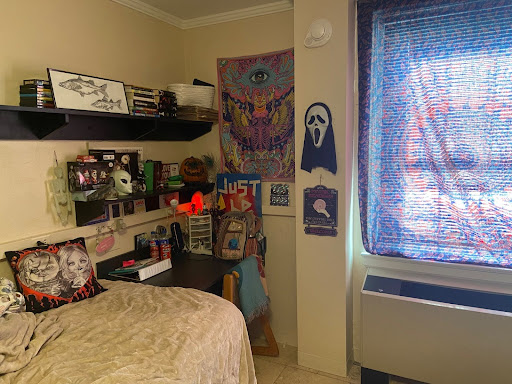New cell tower project may fall through
Like Titans standing tall on mountain ridge tops, cellphone towers can dominate the landscape.
In 1985, there were 900 of these giants, and in only 30 short years this number has grown to 205,000, according to the Pew Research Center. Now, Guilford College stands poised to host yet another one.
In a meeting last May, AT&T discussed plans to construct a cell tower in the Meadows. Support Services Manager Rex Harrell said that the school would earn $96,000 over 5 years to support the college farm and the sustainable food program.
“The cell company puts up the tower for a period of time, and basically they pay you to lease the property,” said professor of English Jim Hood ‘79.
The rapid expansion of cellphone towers has accompanied the increase in cellphone users. For instance, 90 percent of Americans now own a cellphone and 72 percent report calls occasionally being dropped, according to the Pew Research Center.
Fewer calls will be dropped with better cell phone coverage. By hosting a cell-phone tower, the college may help reduce frustrations of cellphone users.
Cell towers communicate to surrounding towers by using radiofrequency according to the American Cancer Society. While exposure to RF waves cannot cause cancer directly, at higher levels these waves can heat body tissues.
However, the common everyday amount of RF energy most humans are exposed to has less of an impact than changing the temperature in a room.
Even so, members of the community have expressed concerns.
“Constructing a cell tower on the farm would be essentially taking away space for current and future farm needs, like valuable ecosystem services of the field and forest and land for food production,” said Holly Peterson, assistant professor of geology. “It would be wise to create a build-out plan for that space before proceeding with development, especially in light of a possible future major in sustainable food systems.”
Although the tower would be located outside of the stream’s buffer zone, construction near a stream may not necessarily be a good thing.
“My biggest concern is whether the tower would have any effect on wildlife, mainly birds,” said Hood. “It seems like it’s disingenuous for me, as a user of a cellphone, to say ‘Don’t put a cellphone tower up in my backyard.’
“But it’s not disingenuous for me to say if there are impacts on non-human life, it’s important for us to look out for those lives that can’t speak for themselves.”
Hood has a valid point. The U.S. Fish and Wildlife Service indicates that U.S. communication towers are estimated to kill between four to five million birds annually.
Besides, the aesthetics of cellphone towers bother many people. In the May meeting, AT&T said that the cell tower would be disguised as an Christmas tree, extending 50 feet above the natural tree line.
“That’s definitely an interesting model, more attractive than I would have imagined,” said sophomore Sommer Fanney. “Then again, I had a hard time imagining a cell phone tower shaped like a tree.”
For the moment, those concerned about the wildlife, the stream and the farm may remain calm.
“The cell tower company will not return my phone calls or emails,” said Harrell in an e-mail to The Guilfordian.
“I am very sure that this project is completely off the table at this point.”





